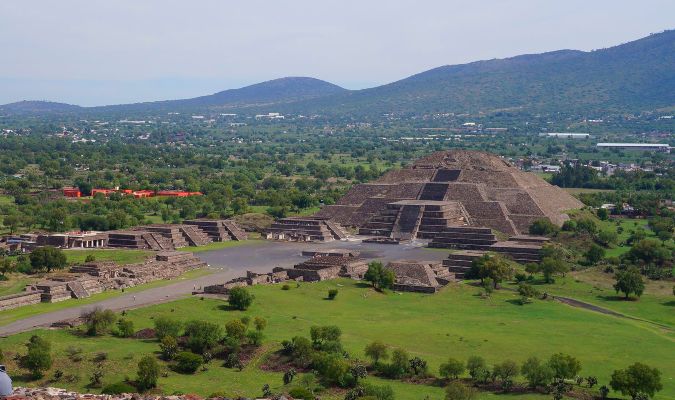A home to gods, a burial site for royalty, a center of human sacrifice: the pyramids in Mexico are an enthralling insight into the country’s endlessly fascinating and highly-successful ancient cultures. The Maya, Aztec, and Olmec people all built these towering stone structures, many of which remain in excellent condition despite being centuries old.
Today, tourists from across the globe travel to Mexico to visit these magnificent ancient structures. Here are eight incredible pyramids in Mexico we think you should try to visit at least once in your lifetime.
Pyramids in Mexico: Eight Top Sights
El Castillo
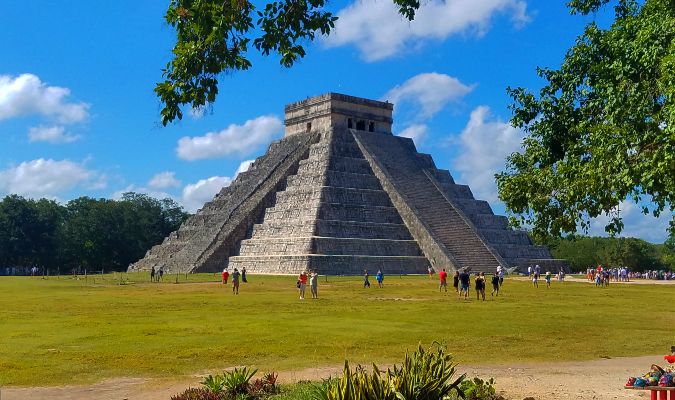
Where: Chichen Itza, Yucatan
The stone-stepped outline of El Castillo, in the ancient Maya city of Chichen Itza, is iconic, both in Mexico and across the planet. Built around 800 AD, this grand structure, also known as the Temple of Kukulkan, was once a place of worship dedicated to the Yucatan Maya feathered serpent god Kukulkan, a close relation to the Aztec god Quetzalcoatl. Now it’s one of the most popular tourist attractions in Mexico. Its four sides each include a set of stairs which lead to a box-shaped temple at the top. Unfortunately for intrepid tourists, however, these are now off limits to help preserve this magnificent human-made wonder.
Read more: Go on the ultimate archaeological tour of the Yucatan Peninsula with Journey Mexico which includes an out-of-hours tour of Chichen Itza. Just click the ‘more info’ button below.
Ixmoja
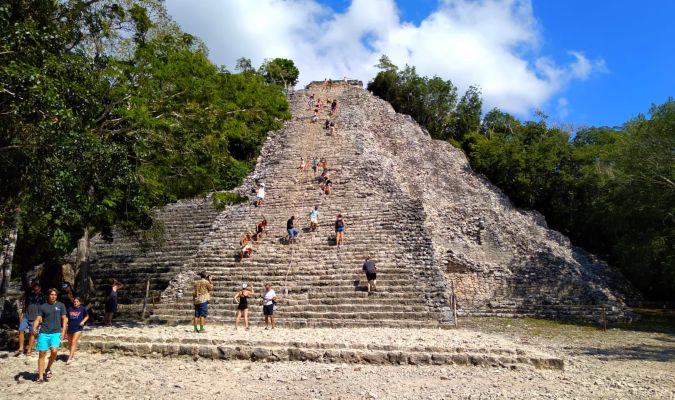
Where: Coba, Quintana Roo
A ragged stone pyramid stretching 42 meters high, Ixmoja is a breath-taking structure nestled in the archaeological site of Coba. Sometimes called Nohoch Mul (which actually refers to a cluster of pyramids in Coba), Ixmoja is one of the few ancient Maya pyramids in Mexico that you can still climb. A long rope acts as a banister to keep tourists safe as they scale the 120 steps. At the top, climbers are rewarded with gorgeous views over the jungle canopies below.
Pyramid of the Niches
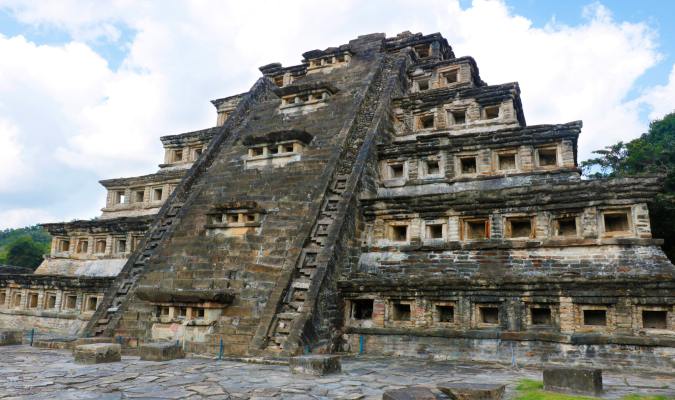
Where: El Tajin, Veracruz
A truly eye-catching structure, the Pyramid of the Niches in the ancient city of El Tajin is an architectural wonder of six, stacked platforms reaching 20 m into the sky. Built around 800 AD, this Mesoamerican temple is brimming with fascinating features that give us an insight into its former function. Perhaps most fascinating of all are 365 niches which appear to be related to the solar year. El Tajin itself was an important settlement which could have been populated from as early as the 1st Century AD. The site now contains plenty of archeological gems including more pyramids and 17 ball courts.
Pyramid of the Magician
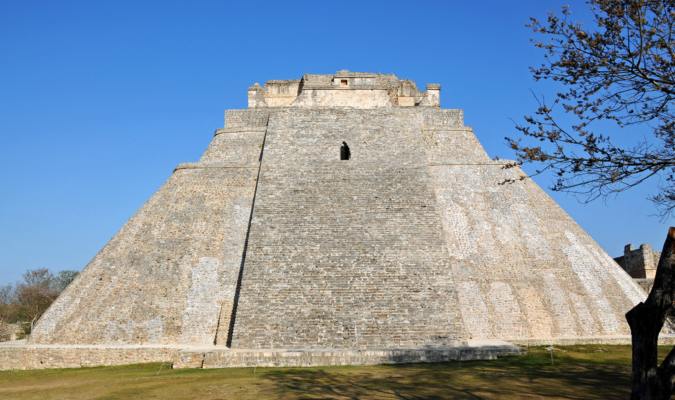
Where: Uxmal, Yucatan
With its rounded, sloping sides, the Pyramid of the Magician in Uxmal is a fascinating architectural wonder. Just as marvelous as the Mexican pyramid are the many ancient myths surrounding its original construction. Many draw on the idea that it was built in one night, obviously an impossibility for a pyramid around 40 meters tall and 69 meters long at its widest point. One of these wild stories, in which a magician built it overnight, is where its name derives. The actual construction began around the 6th Century AD and continued over the next four centuries.
The Temple of the Cross
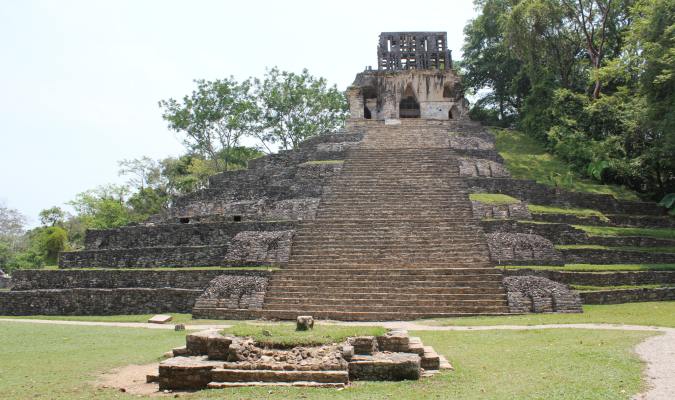
Where: Palenque, Chiapas
Within the pre-Hispanic City of Palenque, a UNESCO World Heritage Site, is the Temple of the Cross, the largest in a triumvirate of pyramids in its south-east corner. It’s thought the stone-stepped structure was constructed around the reign of Kan-Bahlum from 684 AD to 702 AD. Inside, bas-relief carvings depict mythical and historical stories giving us an insight into the people and culture of that period. The other two pyramids in the Cross Complex, as it is known, are the Temple of the Sun and the Temple of the Foliated Cross. The trio all contain fascinating historical inscriptions, working together to create a flowing narrative.
The Temple of the Inscriptions
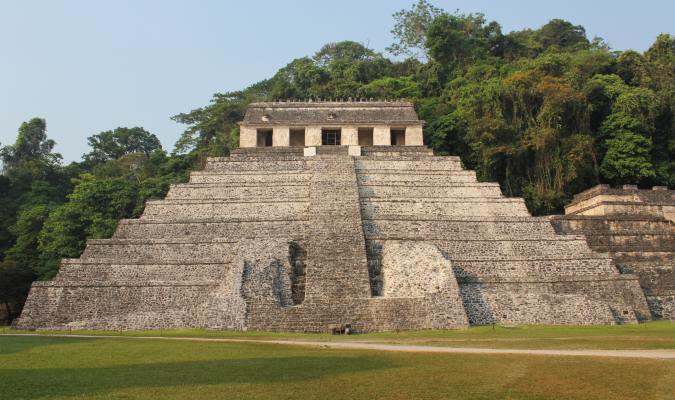
Where: Palenque, Chiapas
The largest Mesoamerican stepped pyramid in Palenque, the Temple of the Inscriptions was built as a memorial for K’inich Janaab’ Pakal, ruler of the ancient city in the 7th Century. Six decorated piers — or rectangular platforms — lead to a temple which proudly surveys the magnificent UNESCO World Heritage Site in which it sits. The pyramid was named after three hieroglyphic tablets discovered inside. These highly important pieces of literature expanded our understanding of the ancient Maya world, particularly on their belief that major events tended to repeat on the same date.
Pyramid of the Moon
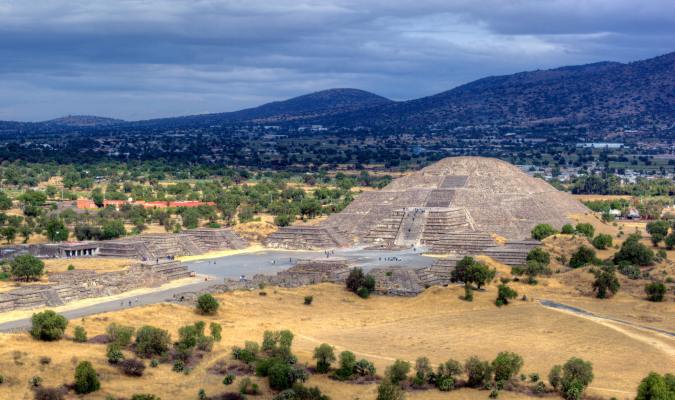
Where: Teotihuacan
The ancient pre-Hispanic city of Teotihuacan is dominated by two impressive structures, the Pyramid of the Moon and the Pyramid of the Sun. The former is the smaller of the pair but older than its sibling. Stretching 43 meters into the sky (around half the height of the Statue of Liberty) it is a highly impressive piece of architecture, particularly when you notice it has been crafted to mirror the outline of the hill behind it, Cerro Gordon. Historians believe it was built between the 2nd and 5th Centuries as a temple to honor the goddess Teotihuacan, a deity with connections to water, the earth, and the underworld.
Pyramid of the Sun
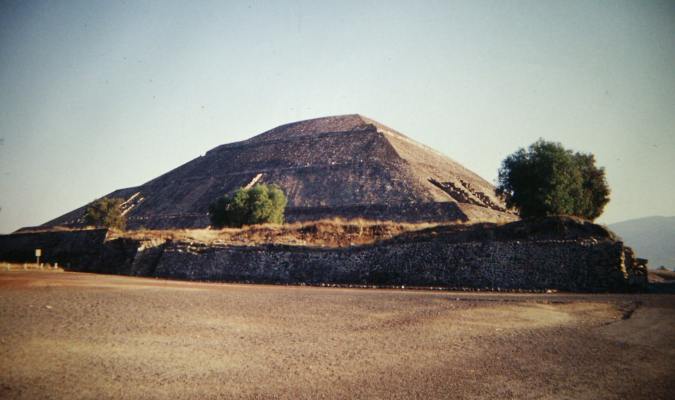
Where: Teotihuacan
At 65 meters high, the Pyramid of the Sun is significantly taller than the Pyramid of the Moon and the largest structure in Teotihuacan. Unlike its sibling, we’re not sure which deity it was dedicated to if any. We do know that it was built in two parts. The first, around 100 AD, took it to around the size we can see today. The second, around 50 years later, grew it to around 75 meters high. Surprisingly, visitors to both of the twin pyramids can climb to the summit for breath-taking views.
Want to book a tour of the Mexican pyramids?
As the premier Mexican travel planners, we can help you book the cultural trip of a lifetime taking in the magnificent pyramids of Mexico. Speak to one of our travel planners today or fill out our easy-to-use Travel Planner to begin your adventure.

